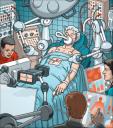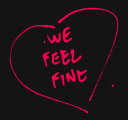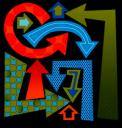Comfortable Control
Thursday, October 15th, 2009I was invited to give a 2-hour workshop at the Design Research Conference 2009. I focused on designing for how minds really work. My pitch:
A dash of cognitive science + design thinking = innovation breakthrough!
 The workshop started with a personal example on how to make it rain. A large insurance company had a few sales people that could really out produce (sell) the others. These were the rainmakers. The management of the insurance company wanted to create a “program” that could transfer the secret sauce of rainmaking to other sales professionals to increase their production.
The workshop started with a personal example on how to make it rain. A large insurance company had a few sales people that could really out produce (sell) the others. These were the rainmakers. The management of the insurance company wanted to create a “program” that could transfer the secret sauce of rainmaking to other sales professionals to increase their production.
A classic problem and many solutions were attempted – training, best practice databases, coaching, new incentive systems and so on. Not much happened.
Finally, we tried a dash of cognitive science in the form of talk-aloud protocol studies. These were awkward at first but did uncover the secret sauce.










